

The notion of temperance dates back to ancient Greek philosophy, where Aristotle and Plato described it as an essential virtue for regulating the enjoyment of sensual pleasures, such as food, drink, and sex. Aristotle, in his work Nicomachean Ethics, emphasizes the importance of measure and balance in human life. Plato, in The Republic, considers temperance as a fundamental virtue for maintaining harmony in the soul and society.
During the Renaissance, Temperance was commonly depicted as a woman sitting or standing, diluting wine with water by pouring the liquid from one container to another. This iconography is linked to the harvest and fermentation practices of the time, where wine often had to be tempered with water before being served due to excess alcohol, sugar, or tannin. These representations were popularized through panel paintings in the mid-15th century.
At that time, Temperance was often painted as an allegorical, supernatural figure, with elements defying the laws of physics, such as liquid flowing at an improbable angle. For example, in Florentine art, a figure by Pesellino has a festooned halo around her head, signifying her allegorical nature. This allegorical representation aimed to convey moral and ethical messages through easily recognizable symbols.
In medieval and Renaissance Europe, Temperance was an ethical pillar. In Christian doctrine, it signified the mastery of carnal desires and the balance between excesses. Alongside prudence, strength, and justice, it structured personal and social ethics. In the 13th century, its symbolism was deeply rooted in religious art. For example, the sculptures of Gothic cathedrals, like those in Nantes, depict it as a draped woman pouring water from one container to another, a metaphor for moderating passions borrowed from Antiquity.
Michel Colombe, in his "Tomb of François II of Brittany" (1502-1507), sculpts Temperance with simple clothing and a serene expression, contrasting with the armed strength or justice holding a sword. These aesthetic choices highlight her calming nature, capable of tempering warrior or judicial ardors. This artistic representation of Temperance reflects the values of the time, where moderation and balance were considered essential virtues for maintaining peace and harmony in society.
Representations of Temperance are not limited to sculptures and paintings. They also appear in the literature and philosophy of the time. For example, Dante Alighieri, in his Divine Comedy, places Temperance among the virtues guiding souls to paradise. This literary inclusion underscores the importance of Temperance in medieval and Renaissance culture and thought.
The medieval iconography systematically associates Temperance with three specific objects:
These elements, codified by treatises like Cesare Ripa's Iconologia (1593), served as a visual repertoire for artists until the 18th century. These treatises provided detailed descriptions of virtues and vices, as well as associated symbols, allowing artists to represent these concepts coherently and recognizably.
Furthermore, Temperance is often depicted with wings, symbolizing spiritual elevation and the ability to transcend earthly desires. This angelic iconography is particularly visible in Renaissance tarot decks, where Temperance is often portrayed as a celestial figure, gracefully pouring water from one container to another with divine serenity.
The Temperance card finds its first representations in the Italian tarots of the 14th century. Among the oldest decks, the Visconti-Sforza Tarot of 1441 is particularly notable. In this deck, Temperance is depicted as a young woman pouring water between two urns, in a calm and frontal posture. This iconography is directly inspired by Christian virtues, where Temperance is often associated with moderation and self-control.
Over the centuries, the representation of Temperance has evolved, influenced by printing techniques and regional cultural contexts. For example, in the Charles VI Tarot, Temperance is depicted with a halo around her head, denoting an allegorical figure. The liquid flows at an impossible angle between two undecorated earthenware pots, emphasizing the mystical aspect of the card.
The Rosenwald Tarot, block-printed, presents an almost identical version to the Charles VI Tarot, but with minor variations in ornamental details. These changes reflect the evolution of printing techniques and the artistic preferences of the time.
The Visconti-Sforza card, painted in Venice or Florence in the 1470s to complete the partial deck originally created in the 1450s, shows a woman with braids and rolled bars, indicating that she might be a servant holding similar containers. This representation highlights the role of Temperance in daily life, as a necessary virtue for service and the moderation of pleasures.
An intriguing variant is found in the Alessandro Sforza Tarot, where Temperance is depicted nude, sitting on a deer, one hand covering her sex while she pours water from a cup. This image, inspired by the myth of Actaeon, merges chastity and the domination of instincts, adding a psychological dimension to this virtue. More specifically, the nude woman is sitting on the deer's back, her shoulders turned towards the animal's head. With her right hand, she pours water from a cup onto her sex, which she covers with her left hand. The cup is difficult to distinguish as it was engraved with a brush along with other decorative elements.
The representation of Temperance on Alessandro Sforza's card is linked to the Greek myth of Artemis, or Diana in Roman mythology. Diana, an allegory of moral teaching, renewed her virginity by bathing in a sacred spring during her annual appearance. However, she was observed and lustfully desired by Actaeon, and in her fury, the goddess transformed him into a deer, an animal connected to her myth as the goddess of the hunt named Elaphebolos, meaning she who hunts the deer with arrows.
The deer was also perceived as a symbol of gentleness, moderation, and endowed with multiple prerogatives. In Roman mythology, Diana was always seen as a virgin goddess, and her immutable rituals included the act of taking and pouring water, an element of regeneration and purification. For this reason, in Rome, the temples of the Vestal Virgins, consecrated virgins, were located between small woods near springs emerging from rocky escarpments.
In Roman mythology, Diana was perceived as a virgin goddess, and her temples were often located near water springs, symbolizing regeneration and purification. This association between water and purity is found in the Temperance card, where the act of pouring water from one urn to another symbolizes moderation and the mastery of passions.
In accordance with the Christian sense, Temperance's primary task is to tame sensuality and sexual pleasures, so it is consistent that chastity is among its virtues. In the 1369 tabernacle by painter and sculptor Orcagna, the four cardinal virtues are each represented, placed according to the precepts of Saint Thomas Aquinas, side by side with associated virtues. In particular, we see the virtues of humility and virginity linked to the cardinal virtue of Temperance.
Diana completed her purification ritual not to cool certain ardors, but because by pouring water on her sex, she renewed her virginal purity. Based on the description given in the myth, the representation assumes a moral value, like the goddess overcoming Actaeon, a symbol of temptation, by rendering him tempered. Similarly, men must tame and master their instincts, remain in a state of chastity by drinking from the salvific water of Temperance.
The position assumed by the goddess on the deer is not unusual in late medieval art. On a 15th-century Venetian mortar, we find similarly a fantastic animal ridden by a boy.
In the anonymous Paris Tarot, we have a unique interpretation of Temperance. Here, she is depicted as a young woman pouring a liquid, probably water, as it is colored blue, onto what appears to be a fire on the ground. This scene is intriguing as it can be interpreted in different ways. The swirls above the fire could be the smoke from the fire or the steam resulting from the evaporation of the water. This representation could symbolize the act of extinguishing the inner fire, calming impulses and desires.
Jean Noblet, with his type 1 Tarot of Marseille, introduced distinctive elements that differentiate Temperance from the Italian tarot cards of the previous century. Two major aspects stand out:
These two fundamental aspects, the angel wings and the diadem, which became characteristic with the type 1 Tarot of Marseille, have persisted and are now constant elements in the representation of Temperance in the Tarot of Marseille.
At that time, Europe was marked by a revival of interest in ancient philosophy, particularly the ideas of moderation and balance advocated by Aristotle and the Stoics. These concepts are reflected in the representation of Temperance, which embodies the virtue of moderation between excesses.
The cultural influences of the time are also reflected in the iconographic elements of the card. The angel wings can be seen as a reference to the angels of Christian theology, symbolizing purity and divine guidance. The diadem, on the other hand, can be interpreted as a symbol of the crown of wisdom, an idea present in many mystical and philosophical traditions.
Jean Dodal, active in Lyon between 1701 and 1715, introduced two distinctive elements in his representation of the Temperance card. The first, and perhaps the most controversial, is the bare or visible chest of the allegorical figure. This subversive representation could be related to the goddess Diana, symbol of chastity and purity, but also of femininity and seduction. Indeed, Dodal seems to have wanted to make his female figures more seductive, as evidenced by the beauty mark added to the face of the High Priestess in his tarot deck.
The bare chest of Temperance is a particularly notable addition because it breaks with the previous iconographic tradition where allegorical figures were more modestly dressed. This partial nudity could be interpreted as a way to emphasize vulnerability and authenticity, qualities often associated with the virtue of temperance. However, this representation was not retained in later versions of the Tarot of Marseille, perhaps due to its subversive nature and its potential to shock the sensibilities of the time.
The artworks and iconographic representations of this period often show particular attention to the details and sensuality of female figures. Furthermore, Dodal's choice to make the female figures more seductive could be interpreted as a response to the tastes and expectations of his audience. Tarot cards, beyond their divinatory function, were also artistic objects appreciated for their beauty and symbolism. The presence of the beauty mark on the face of the High Priestess, for example, can be seen as a touch of realism and charm that humanizes the allegorical figure.
The second addition by Dodal, which will be retained in later versions of the Tarot of Marseille, is the depiction of a visible foot of Temperance. In historical Italian tarots and earlier representations, the visibility of the foot was not a distinctive element. For example, in the Jean Noblet tarot (see above), the foot of Temperance is not visible.
In historical Italian tarots, or even in earlier representations of Temperance, the fact that the foot of Temperance is visible was not a distinctive marker, or it was not a discriminating characteristic of the allegorical figure of Temperance. Here, with Jean Dodal, it is difficult to consider whether the fact that he made a foot of Temperance visible was simply an artistic choice by the master craftsman, or whether it was a symbolic intention by Jean Dodal.
The presence of the visible foot in Dodal's card has sparked many symbolic interpretations. Some tarot readers see it as a symbol of pragmatism and stability, suggesting that Temperance has "her feet on the ground". This interpretation is consistent with the allegorical meaning of Temperance, which represents moderation, balance, and self-control. Indeed, the presence of this foot may indicate that Temperance shows a lot of pragmatism, that she has her head on her shoulders and her feet on the ground.
It is, however, difficult to determine whether Dodal had a precise symbolic intention in adding this visible foot, or whether it was simply an artistic decision to balance the composition of the card. Whatever the case, this graphic element was retained by subsequent engravers, thus becoming a canonical feature of the Temperance card in the Tarot of Marseille.
In the Besançon tarot, a regional version of the Tarot of Marseille, the Temperance card has distinct characteristics. A type of card where a woman pours water into a bowl on the ground was popular in northern France and Belgium for about a hundred years. This image first appears in the Jacques Viéville tarot, produced in Paris around 1650. The Vandenborre tarot, a typical example of the 18th-century Besançon model, follows this tradition.
In these variants, the woman on the Temperance card wears a crown and holds a scepter, symbolizing a high status and sovereignty. These graphic additions emphasize the importance of the figure and her central role in balance and moderation. The scepter and crown could also evoke notions of power and control, reinforcing the idea of self-mastery.
A notable feature in the Jacques Viéville tarot and the Vandenborre tarot is the presence of a floating ribbon near the young woman's head, on which one can read "SOL FAMA", which means "glory alone". This inscription refers to a poem by Matteo Boiardo, which begins with "Dopo la morte sol fama n'avanza", which translates to "After death, only glory remains".
The ribbon bearing the inscription "FAMASOL" adds a layer of symbolic complexity, linking the card to literary and philosophical themes. This inscription, taken from a poem by Boiardo, and the reference to Petrarch, show how tarot creators integrated elements of Renaissance humanist culture into their works, thus enriching the symbolism of the cards.
This quote could be associated with the triumph of fame described by Petrarch in his "Triumphs". Petrarch evokes the victory of fame over death, an idea that could be linked to the Temperance card by its message of balance and persistence beyond mortality. This association enriches the card with a philosophical and literary dimension, anchoring its symbolism in the humanist traditions of the time.
The graphic modifications made to the Temperance card in the Besançon tarot and its variants are significant. The crown and scepter added to the image of the woman reinforce her authority and divine status. These elements are not present in the early Italian versions of the tarot, where Temperance is often simply depicted pouring water from one jug to another, symbolizing balance and moderation in a more direct manner.
Éliphas Lévi, whose real name was Alphonse Louis Constant, played a crucial role in the Kabbalistic synthesis of the tarot. In his book "Transcendental Magic", Lévi describes the Temperance card as an angelic figure with the sign of the sun on her forehead and on her chest, the square and the triangle of the septenary, pouring from one chalice into another the two essences that compose the elixir of life. Lévi explains that the triangle in the square symbolizes the fire that dwells in the purified earth. For Lévi, the triangle with three sides and the square with four sides have a numerical value of 7, the number of the hermaphrodite, which is evident, obviously the way he saw the angel. French occultists attributed the Hebrew letter Nun to this card. Speaking of Nun, Lévi says the sky of the sun, the climates, the movement, the changes of life that are always new and always the same.
In his version of the Temperance card, Waite retained the image of the angel but added specific symbolic elements. The astrological symbol of the sun on the angel's head and the triangle in the square on her chest represent the fire in the purified earth, according to Waite.
The angel of Temperance, standing with one foot in the water and the other on the ground, emphasizes the polarity and balance between spiritual and material elements. While the angel pours a liquid from one jar to another, the hands constantly turn, creating a circular motion that mimics the cycle of the seasons turning regularly over the years. Nun also means offspring or fruit, suggesting that the combination of the contents of the two cups is an alchemical act that will create an entirely new third substance. In Waite's card, the angel stands with one foot in the water and the other on the ground, emphasizing the polarity of the cup's contents, a healing elixir just as the alchemist's philosopher's stone is the third substance that will be born from the combination of the contents of the two cups.
The Temperance card in the Rider-Waite-Smith tarot has evolved significantly from the Tarot of Marseille. The symbolic innovations include associating the card with the archangel Michael and reassigning the Hebrew letter Samekh, linked to the astrological sign of Sagittarius. The irises present on the card refer to the goddess Iris, messenger of the gods, and symbolize the rainbow that connects the spiritual and material worlds. This goes beyond the original concept of diluting one liquid with another, where no new third substance is created. Waite associated this card with the archangel Michael, the warrior of God, who does not seem to be a very temperate character. When the Golden Dawn reassigned the Hebrew letters to the cards, Samekh was assigned to Temperance. This letter is associated with Sagittarius, which also does not seem to have much to do with temperance, unless you consider how the centaur combines human and animal natures.
On this card, we see a young woman, probably a tavern waitress, pouring water into a barrel. This barrel could contain wine, rum, or even water, though this remains uncertain. The scene takes place in an environment that evokes a tavern, reinforcing the pirate atmosphere of the deck.
It is interesting to note that this card addresses the notion of dilution. Dilution, in this context, can be seen as a metaphor for temperance and balance. The waitress pours water into the barrel, which could be interpreted as an attempt to temper the alcoholic content of the barrel, whether it is wine or rum. This action recalls the teachings of Xenophon, a Greek philosopher, who claimed that wine tempered by water makes people happy, sociable, and mentally alert, while undiluted wine can lead to excessive and violent behavior.
It is also interesting to note that this young woman, with her bare bust, could be perceived as seductive and attractive to the tavern's customers. This can refer to the notion of chastity and virtuous behavior in the face of desire and sexual life. The card thus seems to play on the contrast between temptation and virtue, a recurring theme in representations of Temperance.
The tavern waitress tempering the wine or rum of her pirate customers refers to the idea that even in situations of chaos and disorder, it is possible to find balance and maintain a certain harmony.
The card shows a young woman sitting cross-legged, her eyes closed, suggesting a state of deep meditation. She holds in each of her hands a flame, similar to that of a candle, symbolizing an inner fire. Around her belly, two winged serpents coil, also evoking an inner fire of desire. These elements suggest mastery of impulses and desires.
The young woman is sitting on a stone throne, a symbol of mastery and sovereignty, particularly of oneself. At her feet, blue roses, symbols of purity and purification, add a spiritual dimension to the card. A butterfly with white wings and three doves flying above her head reinforce this notion of purity and peace.
In the background, two trees stand, symbols of wisdom, longevity, and durability. These combined elements create an image of inner balance and mastery of impulses through calm and serenity.
The young woman in a cross-legged position represents meditation and inner calm, a state of mental and emotional balance. The flames in her hands symbolize the control and management of vital energy or inner passions. The winged serpents around her belly add a dimension of transformation and mastered desire, recalling the symbolism of the caduceus, often associated with healing and the balance of energies.
The stone throne on which she sits symbolizes stability and self-mastery, while the blue roses at her feet represent purity and spiritual purification. The butterfly with white wings is a symbol of transformation and purity, and the three doves flying above her head represent peace and serenity. Finally, the two trees in the background symbolize wisdom, longevity, and durability.
The creators of the "Dreams of Gaia" tarot seem to have wanted to modernize and personalize the traditional symbolism of Temperance. By highlighting a human figure in meditation, they emphasize the importance of personal mastery and inner balance. The flames, winged serpents, and other symbols add layers of meaning, evoking transformation, purity, and peace.
This character seems to embody mastery, control of inner impulses and desires. Unlike other cards where energy is unbridled or where elements overwhelm the individual, here, there is a notion of balance and equilibrium between opposing feelings and emotions. The individual depicted does not need external energy, is neither overwhelmed nor unbalanced by the power of the elements. On the contrary, they use this power consciously and in the right measure to create their own destiny. This mastery is symbolized by their hands caressing both the fire and the ice crystals, as if they were controlling the two elements in a balanced way.
The creators of the Tarot of the Crone seem to have wanted to emphasize a more personal and introspective aspect of Temperance. The figure in a black cloak, walking alone between fire and ice, suggests an inner journey towards balance and self-mastery. Unlike the angels of traditional tarots, who symbolize divine help, the figure of the old woman embodies wisdom acquired through experience and autonomy in managing opposing forces. This card emphasizes inner power and the individual's ability to find their own balance without external intervention.
The "14 TEMPERANCE" card of the Cat Tarot shows a red cat, potentially a symbol of strong desire and vitality. This cat is licking and drinking the water from an aquarium in which a goldfish swims. Unlike what one might expect from a cat, who might instinctively try to fish the goldfish with its clawed paw, this cat chooses to quench its thirst with the aquarium water.
The Red Cat: The red color of the cat can be interpreted as a metaphor for passion and raw energy. This color choice can also evoke the strength of will and self-control.
The Aquarium: The aquarium is a symbol of containment and moderation. It represents a space where resources (water) are available but must be used wisely and cautiously.
The Goldfish: The goldfish, often associated with prosperity and luck, remains out of the cat's reach, thus emphasizing the theme of moderation and control of immediate desires for the sake of longer-term well-being.
The creators of the Cat Tarot seem to have wanted to illustrate the concept of temperance not by simple moderation, but by conscious mastery of instincts and desires. The red cat, despite its energy and destructive potential, chooses not to give in to the impulse to capture the fish, preferring to be content with the water. This scene evokes inner harmony and wisdom that transcend primary instincts.
The Temperance card of the Fountain Tarot is characterized by a very abstract balance. This balance is represented by a board placed on a ball, creating a central point of equilibrium. On one side of the board, on the left, there is a large ball, while on the right, there are four small balls.
This choice of representation highlights several symbolic elements:
This graphic representation also raises the question of perspective and the real balance of the board. The perspective effect may give the impression that the board tilts slightly towards the side of the four small balls, suggesting a dynamic of unstable balance and the need for constant vigilance to maintain harmony.
The Fountain Tarot, on the other hand, focuses on a more concrete representation of balance through physical objects. The absence of spiritual or angelic elements and the focus on geometric shapes and concepts of weight and counterweight offer a more down-to-earth and pragmatic interpretation of balance, while retaining symbolic depth.
The creators of the Fountain Tarot seem to have wanted to modernize and abstract the traditional concepts of the Temperance card. By using geometric shapes and a minimalist design, they have created a card that speaks as much to our modern sense of aesthetics as to our traditional understanding of balance and harmony.
The card features an attractive young woman, dressed only in a white suit and white panties. She has white wings, a detail that recalls the angelic figure of Temperance in the Tarot of Marseille. These wings symbolize purity, protection, and an angelic nature.
The woman pours water from a bottle labeled "Men's Tears" into a champagne flute. The flute, often associated with celebrations, gives the scene a festive connotation. The water in the glass appears sparkling, reinforcing the idea of celebration and transforming negative emotions into something positive.
The bottle labeled "Men's Tears" is a powerful symbol. It suggests that tears, often seen as manifestations of pain and sadness, can be transformed and celebrated. This could reflect a philosophy of resilience and transcendence of life's trials.
The champagne flute, associated with parties and celebrations, reinforces this idea of transformation. It symbolizes the ability to turn suffering into joy, to see the positive side of difficult experiences. This modern interpretation of Temperance invites reflection on how we manage our emotions and trials.
The Exotic Cancer Tarot offers a modern and festive interpretation of Temperance. The transformation of "Men's Tears" into a sparkling and festive drink invites reflection on resilience and the ability to find joy even in difficult moments. This approach contrasts with the traditional focus on balance and moderation, offering a new and inspiring perspective.
Although the Exotic Cancer Tarot presents a modern interpretation, it retains key elements of classical traditions. The woman's white wings recall the angelic nature of Temperance in the Tarot of Marseille and the Rider-Waite-Smith. The act of pouring a liquid from one container to another is also a recurring motif, symbolizing the transformation and balance of emotions.
It is also interesting to note the festive element introduced by the champagne flute. In traditional tarots, Temperance is often associated with sobriety and moderation, while in the Exotic Cancer Tarot, it invites a celebration of life and its challenges. This perspective encourages seeing trials not as ends in themselves, but as opportunities for growth and positive transformation.
The "14 TEMPERANCE" card of the Exotic Cancer Tarot is thus an intriguing fusion of traditional and modern symbols, offering a new dimension to the classic interpretation of this card. It reminds us that even in moments of sadness and pain, it is possible to find reasons to celebrate and transform these experiences into something beautiful and joyful.
The "14 TEMPERANCE" card in the Housewives Tarot is represented by an electric mixer, a typical household appliance from the 1950s. This mixer is in action, blending cream in a mixing bowl. Around this appliance, there are four ingredient boxes, each bearing a symbolic name: joy, sorrow, anger, and justice.
The creators of this card seem to want to emphasize that temperance, or inner balance, is the result of a harmonious blend of various emotions and values. The addition of justice as a "seasoning" suggests that balance is not limited to the simple management of emotions but also includes an ethical and moral dimension.
The "14 TEMPERANCE" card of the Housewives Tarot stands out for its modern and domestic approach. By using everyday symbols like the mixer and ingredient boxes, it makes the concept of temperance more accessible and concrete. Unlike the angelic and spiritual representations of traditional tarots, this card emphasizes the practical application of balance in daily life.
The presence of ingredient boxes bearing the names "joy", "sorrow", "anger", and "justice" adds a psychological dimension to the card, emphasizing that temperance involves the management and integration of various emotions. The fact that justice is described as a "seasoning" adds an extra layer of meaning, suggesting that balance cannot be achieved without a certain amount of righteousness and fairness.
While we can understand the presence of joy, sorrow, and anger as antagonistic emotions that need to be balanced to find calm and serenity within oneself, we can indeed question the presence of the ingredient of justice. Knowing that justice is one of the cardinal virtues, and that on the ingredient box where it says justice, we can read "seasoning" as a subtitle, this indicates that justice is a seasoning of the recipe. It helps to create, to conceive, and is an ingredient in the recipe for temperance.
I am not sure that building temperance at home requires doing justice or rendering justice, but perhaps it has to do with the fact that the allegory of justice or the representation of justice figures includes a balance. This balance, seen in the depiction of justice, can refer to the notion of balance and balance in temperance. Perhaps this is where the link between temperance and justice, which are perhaps two virtues speaking of balance, lies.
The card shows a young man sitting at a table in an interior, probably at home. He is pouring himself an herbal infusion, a gesture that evokes preparation and patience. Next to the cup, there is a pencil and sheets of paper, symbols of reflection and creativity. Behind him, the wall is decorated with several elements: green plants, a poster depicting a man meditating in a cross-legged position with the seven chakras illustrated, another poster showing angel wings, and a window through which one can see a horizon with a sun, difficult to say whether it is a sunrise or a sunset.
The Wake Me Up Tarot takes a more grounded approach to daily reality. The young man pouring an herbal infusion can represent a form of modern temperance, where simplicity and routine become means of maintaining balance.
Each element of the Wake Me Up Tarot card carries symbolic meaning:
The creators seem to want to show that temperance is not only a spiritual or esoteric virtue but also a daily practice that can lead to a balanced and harmonious life. The presence of meditation and chakras suggests an invitation to stay centered and aware, even in routine moments.
This approach allows us to see temperance not only as a spiritual concept but also as a life practice accessible to everyone. While some may find that this card of the Wake Me Up Tarot strays too far from classical representations, it offers a unique opportunity to reflect on how temperance can manifest in our daily lives. The image of the young man at home, engaging in simple and thoughtful activities, can remind us that temperance is also about finding balance in our daily routine. The card suggests that temperance is not only a virtue to be achieved in extraordinary moments but can also be cultivated in the small actions and habits of our everyday lives.
Ultimately, the Wake Me Up Tarot invites us to consider temperance as a living and dynamic practice, integrated into our daily lives, rather than an abstract or distant quality. This modern interpretation encourages us to see temperance in simple gestures, personal reflection, and the balance between our different activities and responsibilities, reminding us that every moment of our lives is an opportunity to practice this essential virtue.
It is also relevant to mention that this card may evoke a certain critique of modern life. Indeed, the representation of temperance in a domestic and everyday context can be seen as a warning against the dangers of routine and mediocrity. The card may suggest that, by wanting to moderate everything, temperance can turn into a monotonous and passionless life. This reminds us of the importance of staying vigilant and aware of our choices, to avoid falling into a routine and boring existence.
Philosophers teach us that staying centered and aware while walking the middle path, symbolized here by the poster with the man in deep meditation, allows us to choose our reactions to events. Virtuous reactions can be symbolized by a calm and meditative nature, represented by the pencil and the pages of the notebook. With a dose of temperance, we can evaluate reality with clarity and make choices that support our long-term goals rather than sabotaging them with impulsive actions.
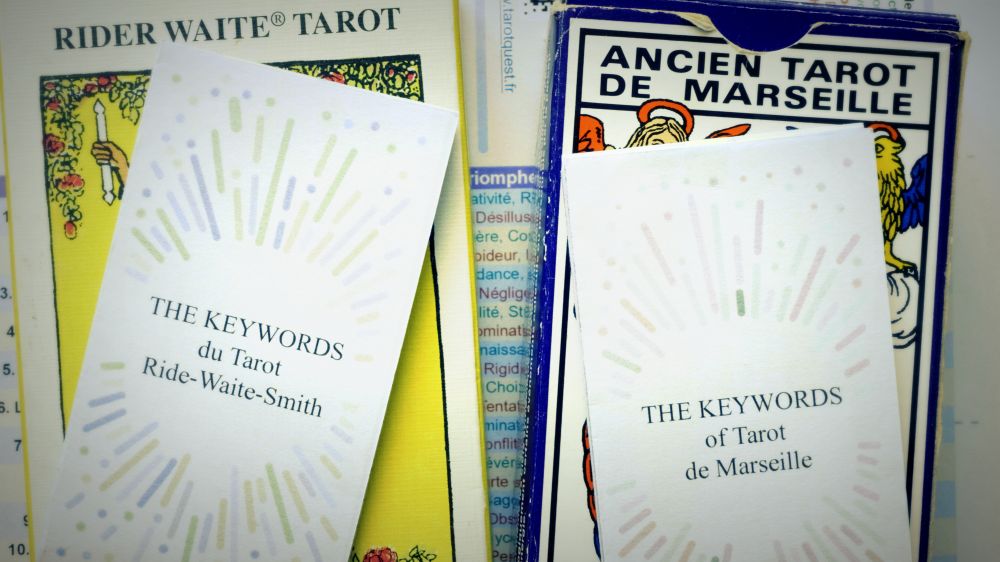
Key words for the 78 cards for the Tarot of Marseille and the Rider-Waite-Smith, to slip into your favorite deck. Your leaflets always with you, at hand, to guide you in your readings. Thanks to them, your interpretations gain in richness and subtlety.
In some Italian tarot decks from the 15th to 16th centuries, virtues were grouped after the Pope and alongside other cards like the Chariot (7) and the Lovers (6). This tradition continued with the Taroccino and Minchiate decks, which were not influenced by the Tarot of Marseille. In these decks, Temperance was placed among real people facing real difficulties, as shown by the first seven cards of the trump series. However, the designers of the Tarot of Marseille positioned Temperance at 14, after Death (13) and before the Devil (15).
We do not know the exact intention of the French Renaissance master craftsman when they placed Temperance in this position. Various theories exist about why an angel appears between the darkest cards in the deck. The angel could be a spiritual guide or its own spiritual essence that one might encounter in the other world, that is, after Death. It could also be a healing presence mixing an elixir to help you face your journey through darkness after Death. Since this Temperance card follows and surpasses the Death card, it may also represent an archangel welcoming the souls of the dead at the gates of heaven. Naturally, one might also think of Petrarch's triumph where there is the triumph of fame over Death. Here, Temperance could be inspired by fame and transcend Death.
Traditionally, Temperance is seen as a card of moderation, patience, and balance. It symbolizes the ability to temper emotions and find a middle ground in life situations. Psychologically, it is associated with self-control and inner harmony.
I propose a different view of Temperance. Rather than seeing it solely as a card of moderation, I interpret it as a stage of creating new balanced ties after breaking old destructive ones symbolized by Death. Temperance therefore represents a "give-and-take" where one learns to give without completely sacrificing oneself, maintaining balanced and mutually beneficial relationships.
This vision is illustrated by the image of the young woman pouring water from one jug to another, symbolizing the balanced flow of energies: I give, but I also keep for myself. This concept of reciprocity is crucial before facing the challenges of the Devil, which represents unbalanced relationships and excessive behaviors.
It is important to note that this vision of Temperance raises a question: how can one learn moderation and balance with Temperance when the next card, the Devil, seems to challenge this balance? The answer lies in understanding that Temperance is not yet the ultimate stage of balance and moderation. These qualities are more fully achieved with the cards of the Sun and Judgment. Temperance is therefore an intermediate stage, preparing the individual to face the extremes of the Devil and progress towards deeper balance.
Temperance, in its essence, speaks of a transitional stage between the following stages (where one moves from one extreme to another):
Temperance thus teaches the importance of balance and reciprocity in relationships, preparing the individual to face the spiritual and psychological challenges to come.
It is essential to return to the first card of the spiritual cycle, Strength (11), which speaks of our inner rage (the previous cards teach us where it comes from) and how we behave with ourselves and with others. Strength reminds us that interaction with others and our inner dimension is central. The young woman holding the lion's mouth symbolizes this mastery and interaction.
The impact of Temperance on personal development is profound. It teaches the importance of balance and reciprocity in relationships. By learning to give without sacrificing and maintaining balanced relationships, the individual progresses spiritually and attains a deeper understanding of oneself and others.
| Symbolic interpretation | Right direction (Positive) | Adaptation, circulation, regeneration, exchanges, harmonization, fluidity, relaxation, serenity | Reverse direction (Negative) | Excess, disproportion, imbalance, retention, misunderstanding, incommunicability, disunity, discord |
| Psychological interpretation | Right direction (Positive) | Conciliatory, mediator, diplomat, supportive, moderate | Reverse direction (Negative) | Unstable, incoherent, extremist, unbalanced |
| Advice | |
| Give up your bad habits. Do not give in to your passions and neuroses. Be moderate and flexible. Live in moderation. Act sparingly. Follow the middle path | |
| Thematic Interpretation | Love | Balanced relationship. Love rediscovered. Pleasant couple life. Friendship instead of love. Mutual misunderstanding. Lies or secrets | Work | Friendly (or not) atmosphere. Transparent (or not) communication. Social work. Regular promotions. Holidays. Imbalance between private life and work | Money | Stopping (or not) gambling. Giving up (or not) speculation. Financial situation regularization or deficit. Loan repayment | Family / Friendships | Return of a loved one. Harmonious family life. Parental absence or failure. Physical or moral violence | Health | Rest or recovery. Natural medicine. Lymphatism. Physical or nervous imbalance. Stress |
| Divination / Prediction | Who ? | A doctor. A therapist. A trustworthy man. A mediator. An arbitrator. | Where ? | At the vacation home. At the spa. In the media (TV, radio, etc.). At an embassy | When ? | Holidays. Reunions. An exchange or barter. A burnout. An argument. A debate | How ? | By joining the extremes. By moderating the passions. By calming the tensions. By soothing the conflicts. By returning to balance |
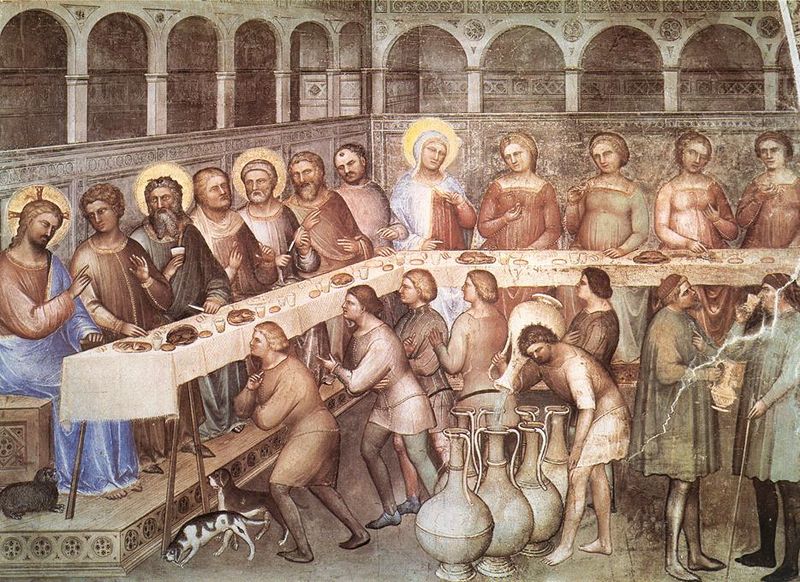
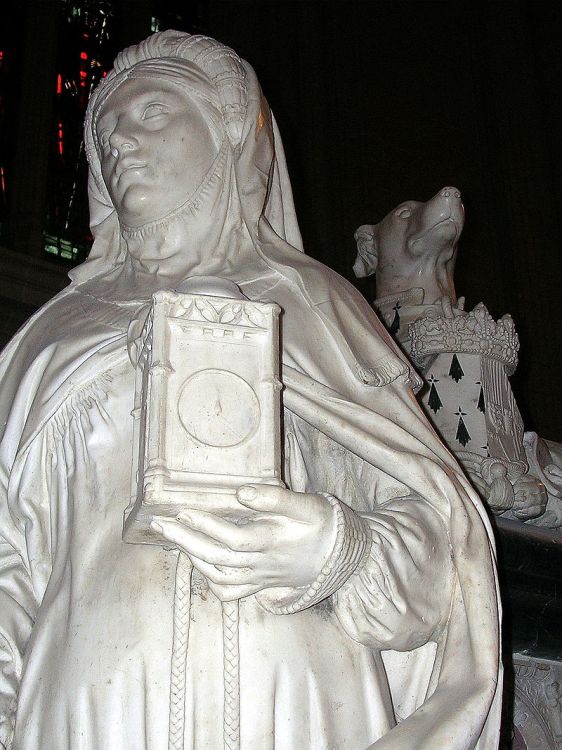
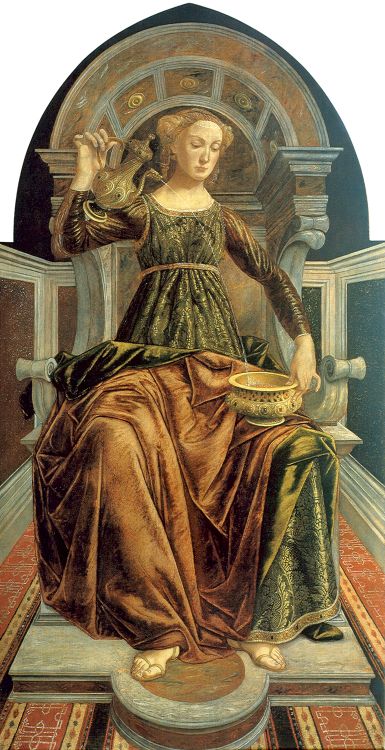
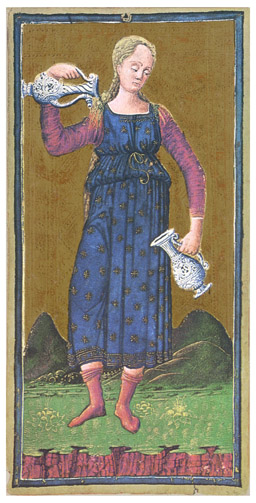
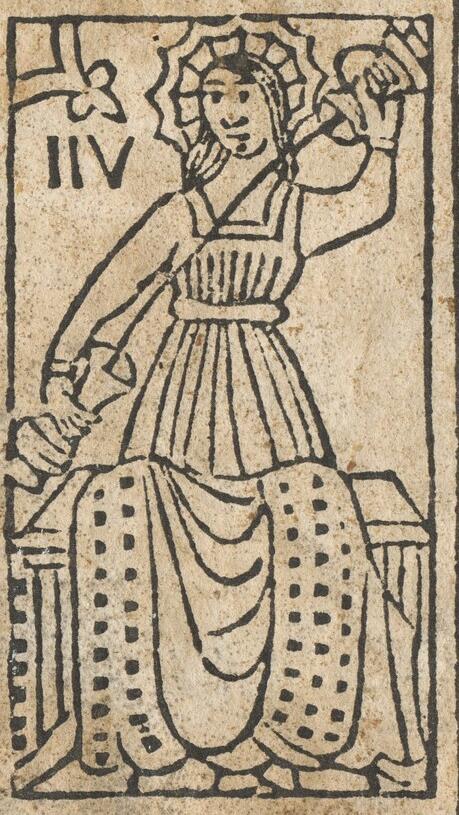
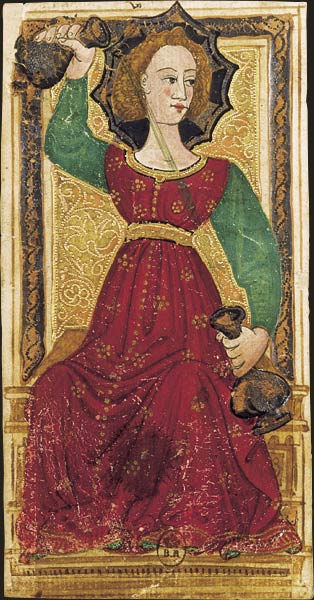
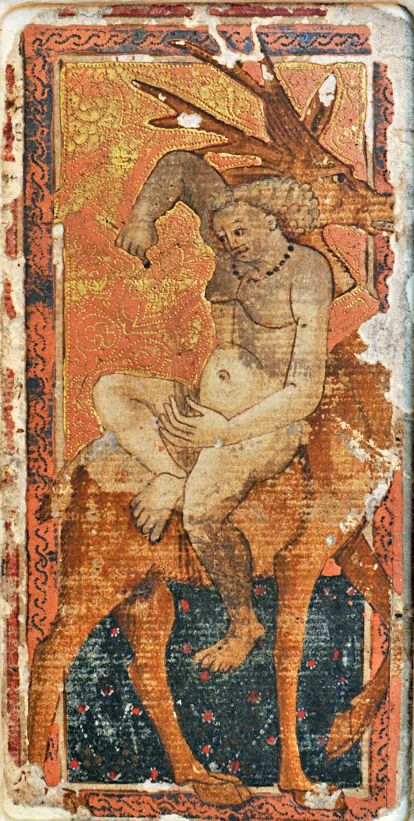
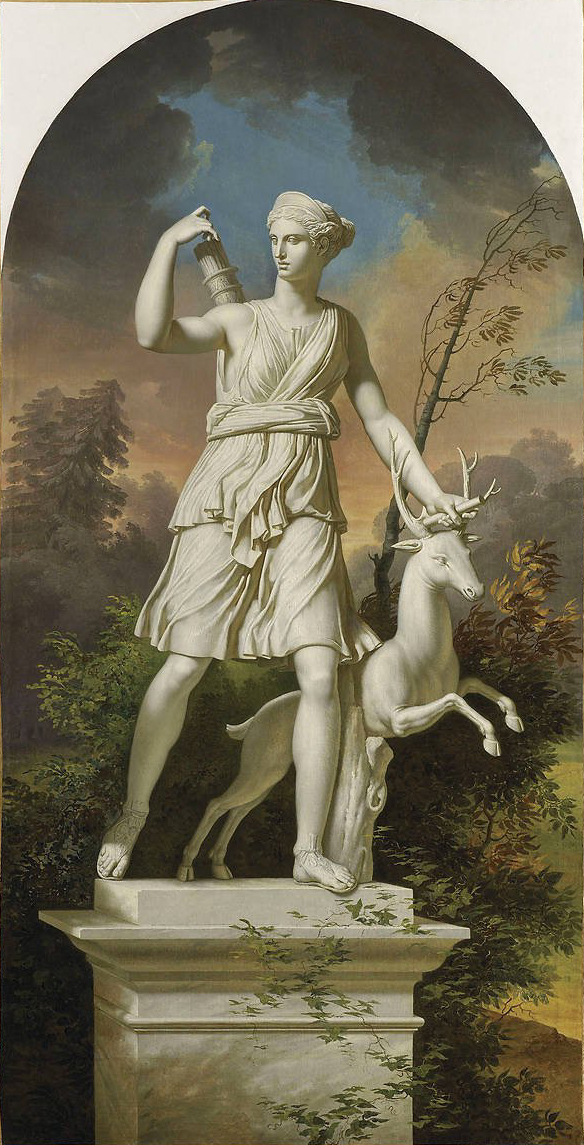
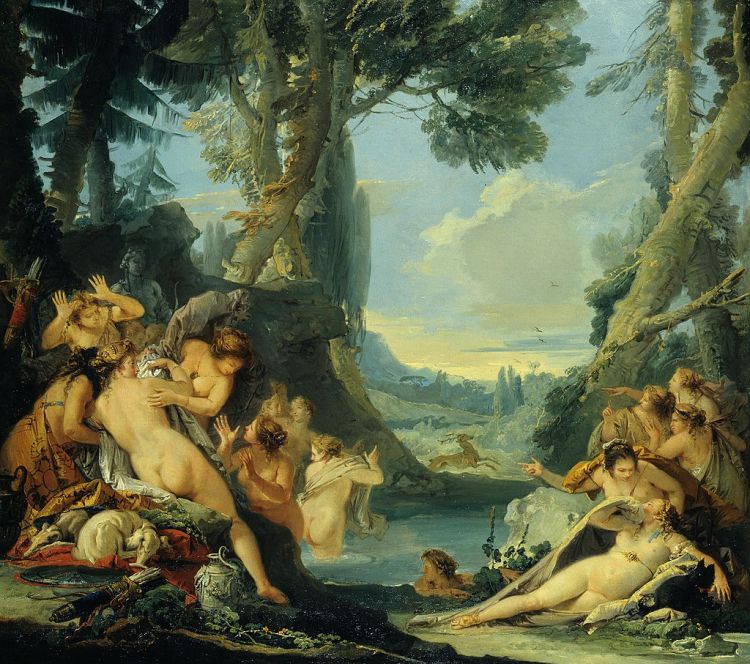
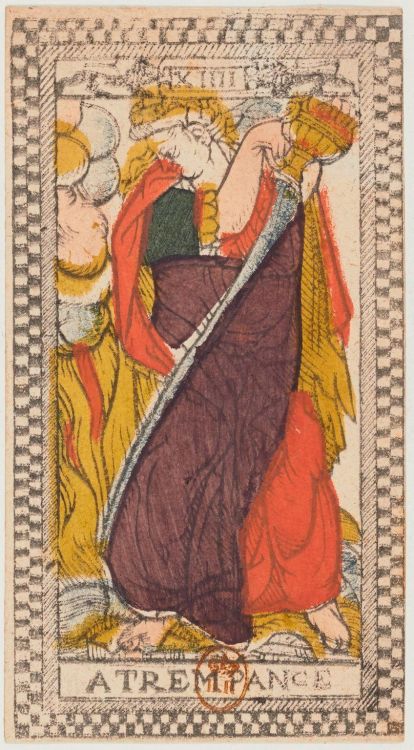
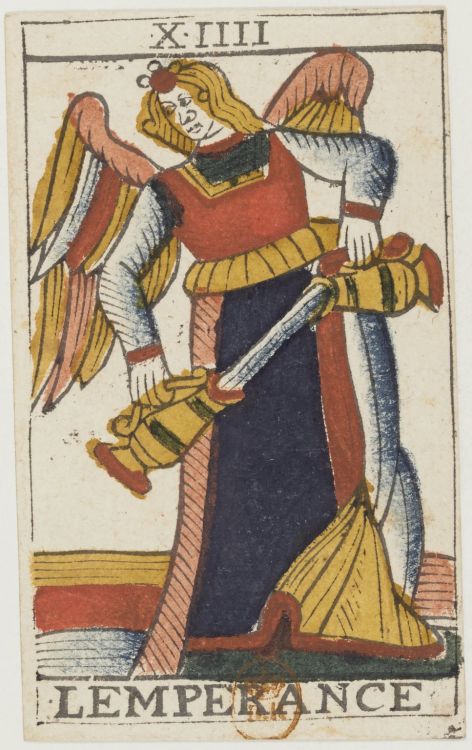
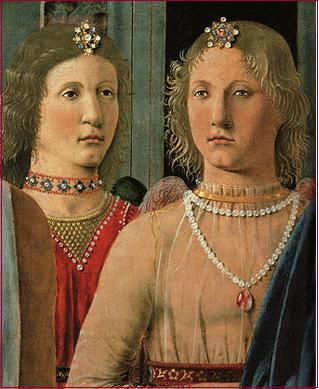
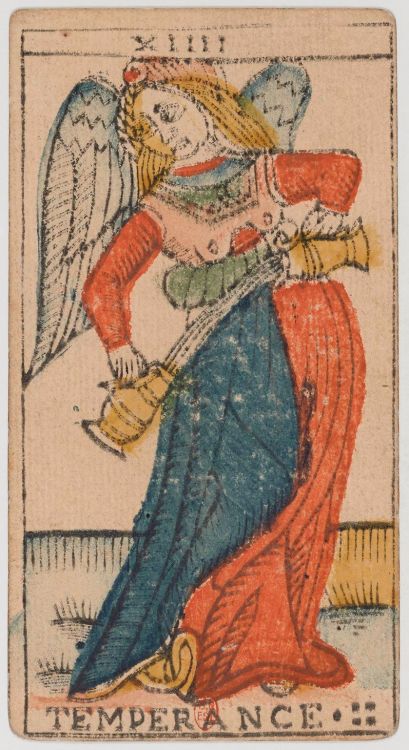
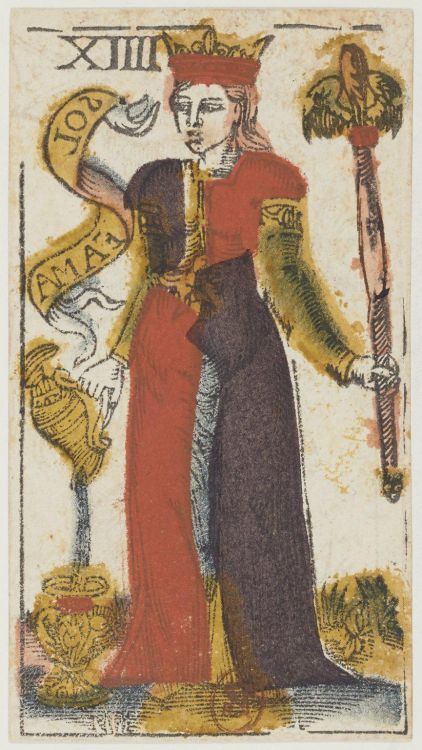
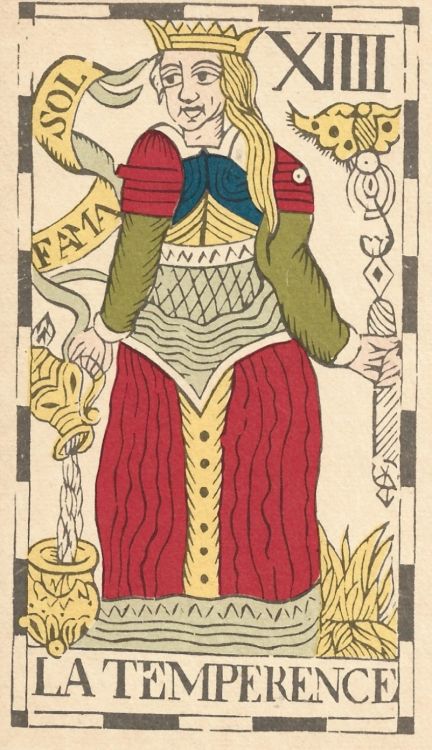
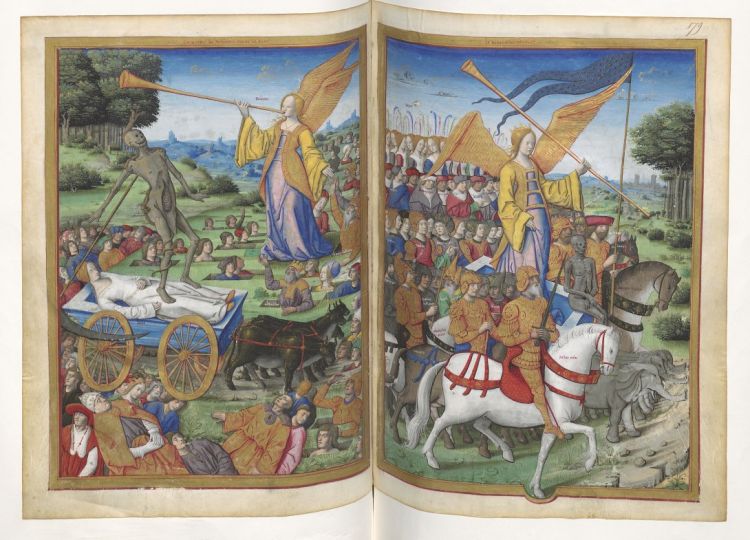
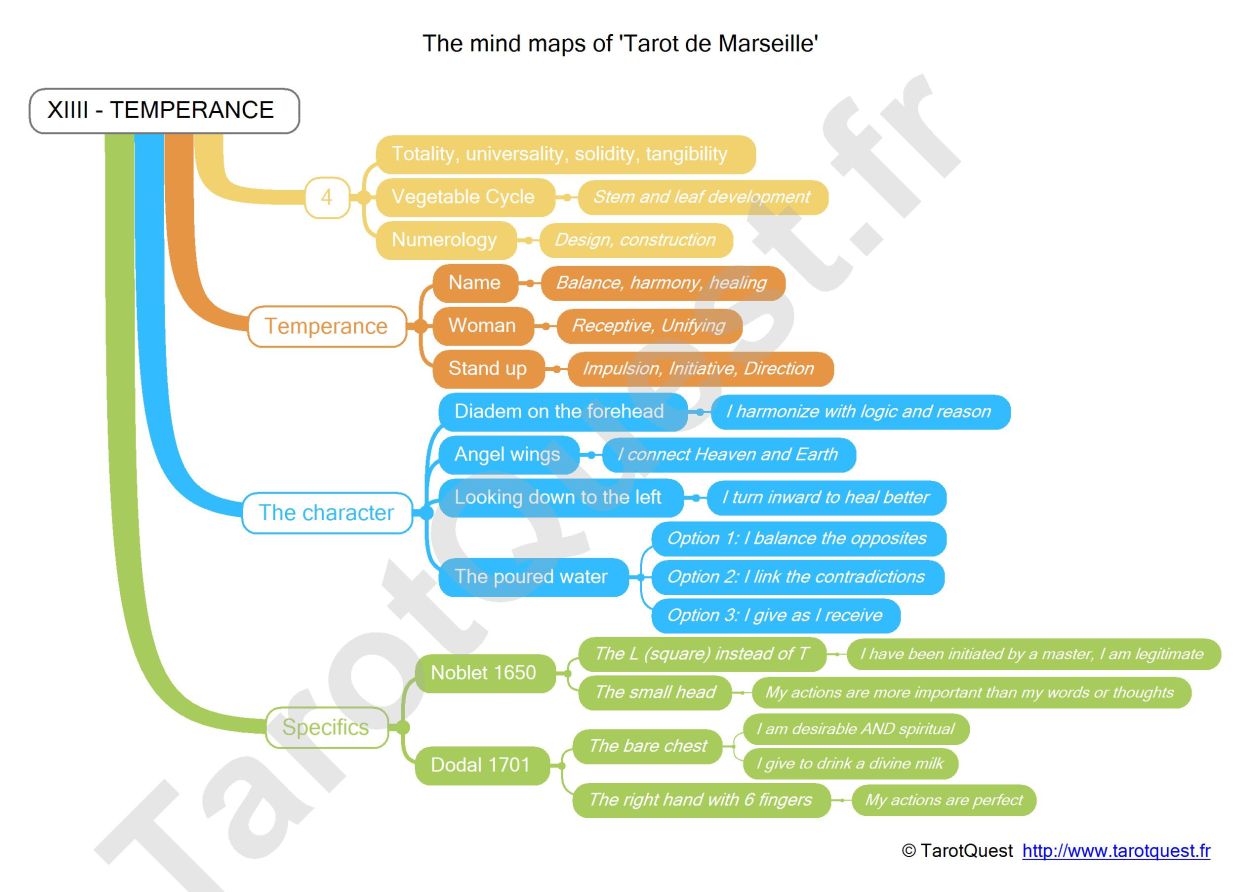
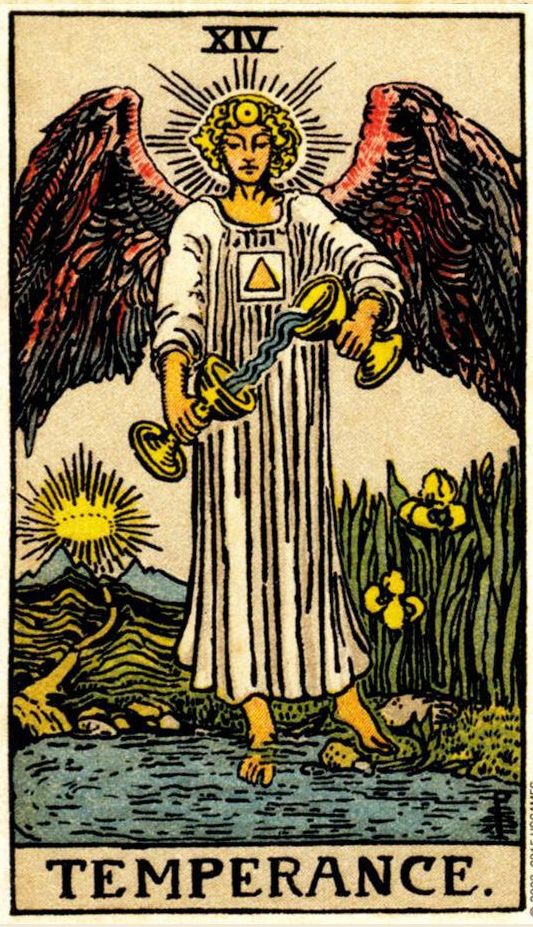
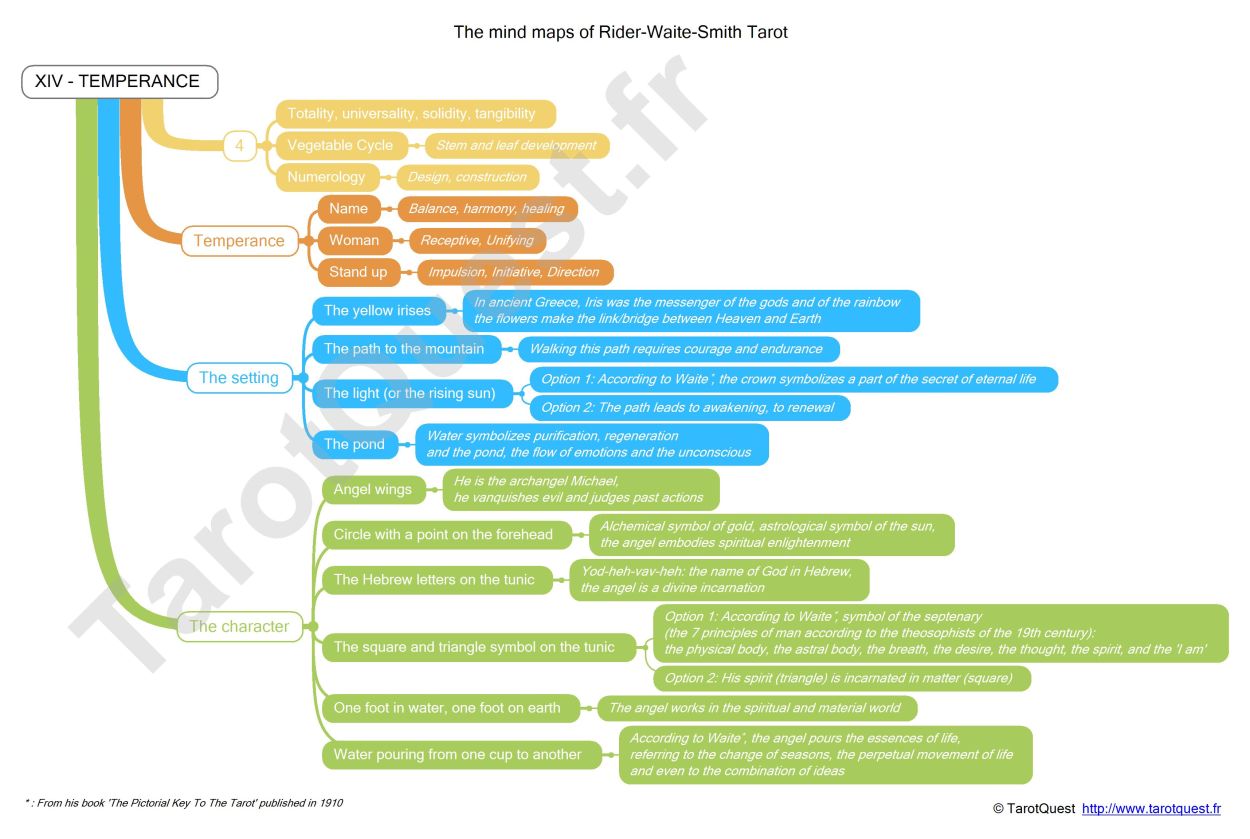
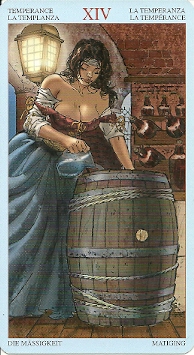
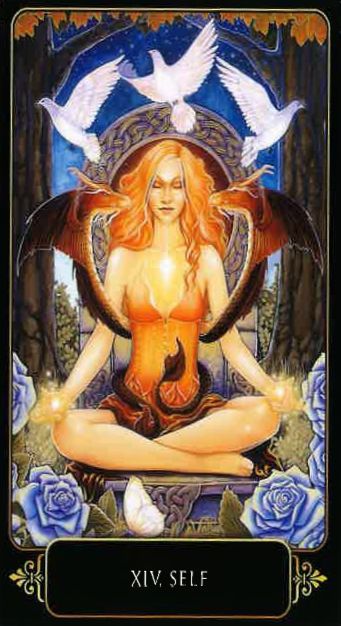
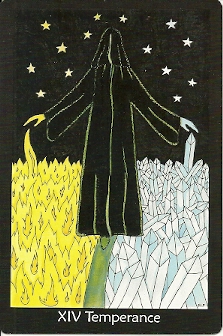
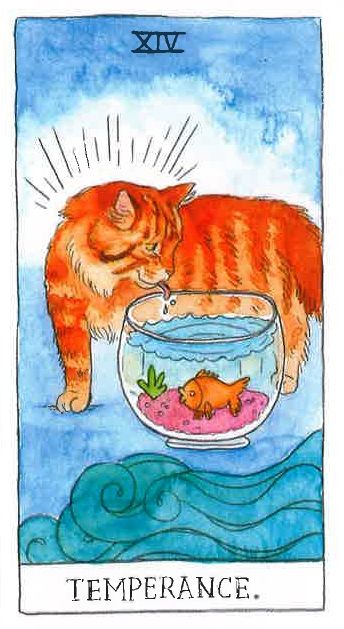
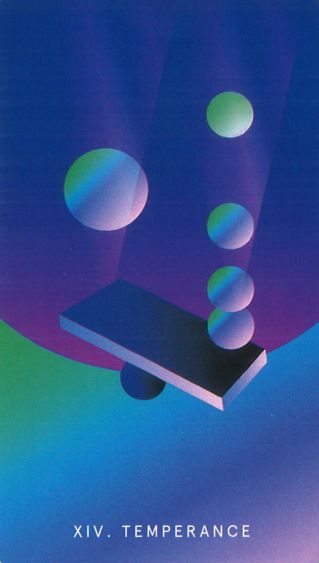
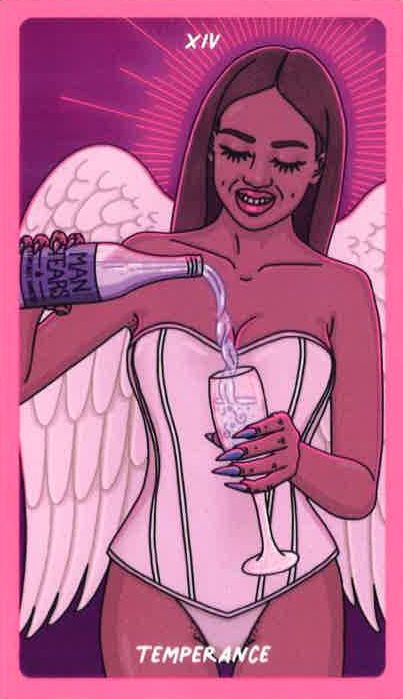
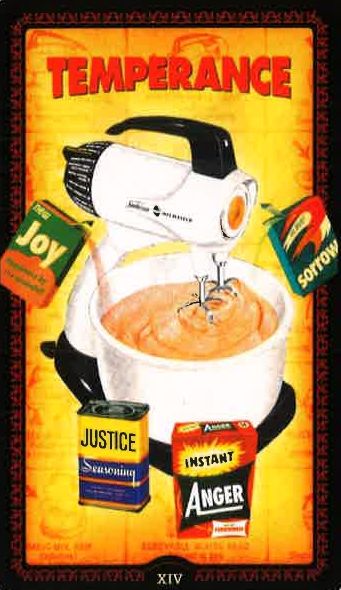
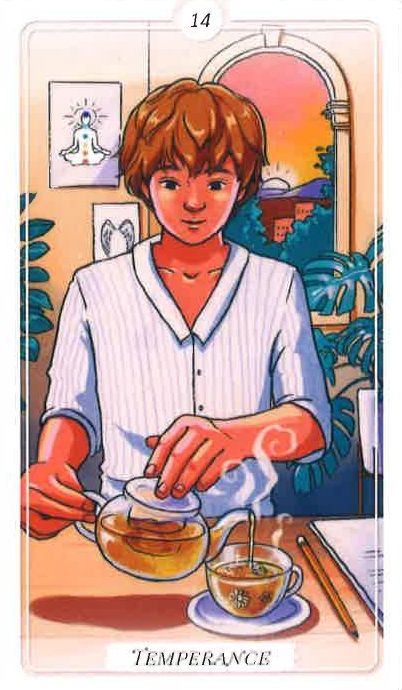
Copyright © TarotQuest.fr